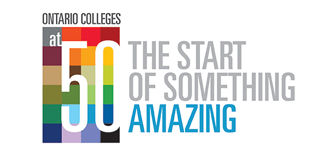Below is an excerpt from author Orland French’s book, PIONEERING: A History of Loyalist College (1992). While some references are no longer current, the publication provides a rich report on Loyalist’s history, which helps to contextualize its milestones. To read more from Mr. French’s book, please click here.
His Excellency the Right Honourable Ramon John Hnatyshyn held two positions of particular interest for Loyalist College in 1992.
As head of the Canadian Heraldic Authority, he presented the College Coat of Arms at Convocation on June 10 to celebrate the 25th anniversary of the establishment of Loyalist College in 1967. And as Governor General of Canada, he represented a tie to an earlier ceremony at the College in which a previous Governor General, Roland Michener, had participated.
His Excellency remarked that Loyalist’s 25th anniversary came “at a particularly auspicious time.” It coincided with Canada marking 125 years of Confederation, Montreal observing its 350th birthday, and British Columbia honouring the first journey of exploration by Captain George Vancouver 200 years ago.
More than 200 years had passed since the Loyalists arrived in the Quinte Region, fleeing from persecution after the American colonies declared independence from England.
The Governor General took issue with the stereotypical portrayal of Loyalists. They were not “a wealthy elite, determined to maintain a privileged past,” Loyalist graduates were reminded at Convocation.
“In fact, they were a cadre of astonishingly brave men and women who had risked their lives and property to remain loyal to the precepts of the Crown,” said His Excellency. “They were essentially refugees.”
The Coat of Arms incorporates the College motto “Cognitio ad Vitam” which translates as “Learning for Life”. The graduates would have cause to make that their personal motto.
“You are entering a post-technical world, an information world – a world in which your knowledge, the fruits of what you have learned, holds the key to your future. And that future has only one certainty: throughout the years ahead you have to keep learning,” said His Excellency. “The majority of those who came here had survived fierce deprivation and had been stripped of their rights in the years leading to the American Revolution. Many had been jailed, had lost the farms on which their livelihoods depended, or had been dismissed from their jobs simply because of their beliefs.”
The Loyalist Coat of Arms incorporates the symbols of those elements of history. “The Cross of St. George recalls the Union Jack around which Loyalists rallied two centuries ago,” he continued. “Canada’s maple leaves are there, as is the eagle, the traditional symbol of the Mohawk people who were themselves Loyalists, settling the lands at Tyendinaga.”
To return to the History Timeline, click here.




